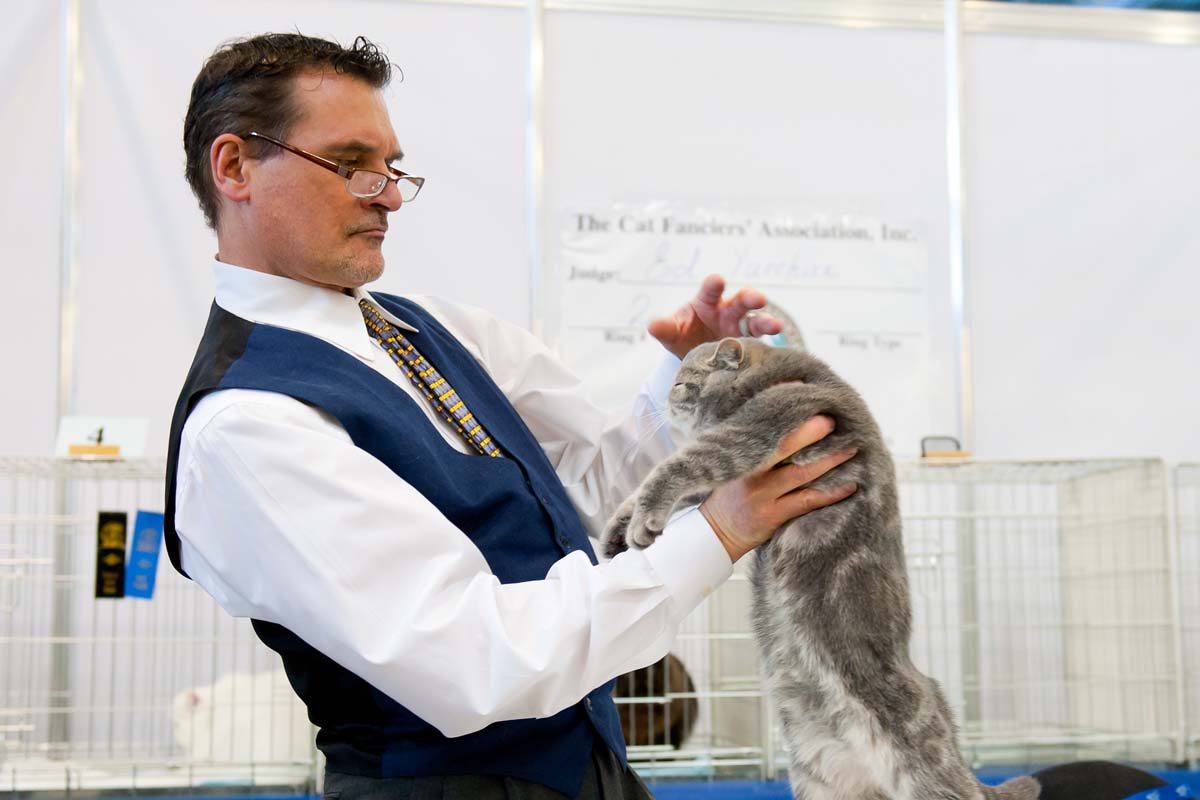Showing your cat can be a great way to get out, meet like-minded people and get to learn all about the cat fancy. Anybody can show their cat, all you need to do is register for a show. All cat breeds have a breed standard, this is a set of guidelines listing the characteristics of the breed such as head, eyes, ears, coat and colour, body, legs and paws, and tail. Cats are judged according to how closely they meet the breed standard.
If you do think that showing is for you, you should attend a few shows before you sign up.
What breeds can show?
Any cat can enter a show, that includes domestics (moggies) who have their own category known as household pets (HHP). All household pets must be desexed or spayed. Although as mixed breeds come in a range of shapes and sizes, judging is based on overall condition, shape, and temperament.
Cat show rules
- Household pets must be desexed, at what age varies from club to club, but it is usually between 4-6 months of age.
- Pregnant and lactating queens cannot be shown.
- Kittens must be a minimum of 10-12 weeks of age, this will vary between cat clubs.
- Cats must be in good health and free of parasites.
Judges, clerks and stewards
The judge is the one who will judge your cat with the help of a steward. It is his job to bring the cat from his cage to the judge’s bench. In some countries, there is also a clerk, who sits at the judge’s bench and writes down the notes/results from the judge. In Australia, the judge typically makes these notes, and then a runner will take the slips to the card room where the results are written onto the cat’s cards.
Groups
There are four cat groups in shows:
1 – Birman, Exotic, Persian, Maine Coon, Ragdoll, Norwegian Forest Cat, Siberian, Turkish Van.
2 – Balinese, Siamese, Oriental, Peterbald, Foreign White.
3 – Abyssinian, Australian Mist, Bengal, Burmese, Bombay, Cornish Rex, Devon Rex, British Shorthair, Ocicat, Russian Blue, Singapura, Somali, Snowshoe, Sphynx, Tonkinese.
4 – Household pets and unregistered or part pedigree cats.
Open or closed shows
Open shows – Owners and spectators are can be present during judging.
Closed shows – The judge judges the cat without the owners or spectators present.
Preparation
Preparing your cat for a show should begin way ahead of time. He should be in peak condition and fed a high-quality diet.
Trim the claws.
Some breeders choose to bathe their cats, others prefer a bran bath and yet others will just groom them.
Pack your gear the night before, it will be an early start.
What to bring
- Vaccination certificate, signed by a veterinarian.
- Proof of desexing (if entering HHP).
- Cat cage (if required), some cat shows supply them. Check with your cat club to see if you need to bring your own cage or if they supply them. Some give you the choice.
- Show curtains. Some clubs only allow white curtains, others permit coloured ones. Again, check with the club on their rules.
- Litter tray, cat litter, scoop and plastic bags (to dispose of any feces).
- Grooming supplies.
- Small bed.
- Toys.
- Food and water for your cat and you.
- Hand sanitiser.
- Cat carrier and blanket for transporting your cat to and from the show.
- Food and drinks for you.
- A small first aid kit with band-aids and antiseptic.
- Business cards (if you are a breeder).
- Pen and notepad.
Arrival at the show
You will meet the entry clerk when you arrive at the show who will take down your name and give you a vetting in slip, cage number, and your show catalogue (if you ordered one).
You will move to the next table where your cat will be vetted in by a veterinarian, to make sure he is in good health.
Once your cat has been vetted, you will take him to the benching area where you will set up your cage. Leave your cat in the carrier until the cage has been set up. Place other items you have under the table the bench is on so that you can keep the area around the cage clear.
Etiquette
Do not:
- Talk when the judge is judging.
- Open another person’s cage unless asked to do so.
- Speak to the judge when she is judging unless she specifically asks you a question.
- Question the judge’s decision.
- Open another person’s cage unless asked to do so.
If you hear “cat out”, standstill. That means a cat has escaped his cage or the judging bench. Close the exit if you are nearby.

